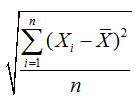Compare and contrast Adlerian and Psychoanalytic theory. How do these theories resemble and differ from each other in respect to viewing human nature, the role of the counselor, and goals?
What will be an ideal response?
Psychoanalytic theory versus Adlerian theory:
• Psychoanalytic theory
• Founders and developers: Sigmund Freud, Anna Freud, and Heinz Kohut
• View of human nature:
• Conscious mind, preconscious mind, unconscious mind
• Id, ego, superego
• Psychosexual developmental stages
• Fixation and defense mechanisms
• Role of the counselor: experts who help clients gain insights by working through unresolved past experiences; transference and interpretation encouraged
• Techniques: free association, dream analysis, analysis of transference, analysis of resistance, interpretation
• Adlerian theory
• Founders and developers: Alfred Adler (pupil of Freud)
• View of Human nature:
• People motivated not by psychosexual desires but by social interest
• Striving for perfection
• Inferiority and superiority complexes
• Style of life
• Role of the counselor: diagnosticians, teachers, and models in an egalitarian relationship; assess why clients are oriented to a certain way of thinking and behaving; emphasis placed on family constellation and earliest memories; active in sharing hunches or guesses; often directive
• Techniques: confrontation, asking “the question,” encouragement, acting “as if,” spitting in the client’s soup, catching oneself, task setting, push button
• Similarities
• Belief in unconscious motivation – one regarding psychosexual impulses, the other, social interest
• Belief in the strong influence of past experiences.
• Directiveness in session, teaching, and interpretation
You might also like to view...
Answer the following statement(s) true (T) or false (F)
1. Approximately plus and minus two standard deviations in a distribution of scores defines about 99% of all cases.
2. Z-scores start at a value of zero and extend infinitely.
3. The formula  can be used to calculate the standard deviation of an interval level data set.
can be used to calculate the standard deviation of an interval level data set.
4. There is no way a social science researcher can determine a value for the dispersion of nominal data.
One group facilitator of a team is anxious to meet between sessions to discuss progress toward group goals and to plan future work that provides more meaning for the group members. This group facilitator:
a. is overreacting to the new group situation. b. needs more supervision in order to become more relaxed between groups. c. understands the best practice called between-session processing. d. is professionally weak regarding group leadership. e.is inexperienced and needs additional training.
The advocacy competencies required of school counselors include: _____
a. Having the disposition (personality, temperament) to advocate on behalf of students b. Possessing the knowledge of resources necessary to advocate for students c. Using communication and collaboration skills to become advocate d. All of the above
Which of the following personal characteristics of the therapist is most important, according to Carl Rogers?
a. ?Unconditional positive regard b. ?Acceptance c. ?Genuineness d. ?Accurate empathic understanding